I haven’t posted anything on the blog since mid November last year. My father passed away and I needed time for self-reflection and healing. It just didn’t feel like posting anything. The last few months were some really tough times and not exactly something I like to remember. The whole world seemed to have turned upside down.
Today is January 8th, the second day of Orthodox Christmas and to all those that observe: ” Mir Boziji, Hristos Se Rodi!” – May God bring you peace, the Christ has been born!
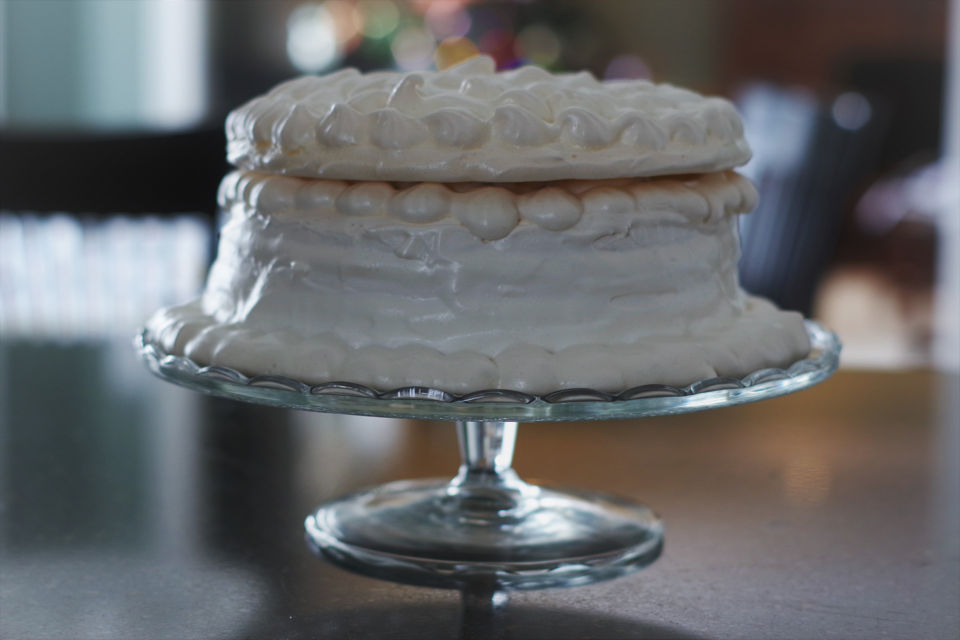
The Spanische Windtorte is what I made for this year’s Christmas dinner. It is an interesting cake characterized by a pre-baked, shiny white shell made with egg whites and sugar and then filled with the mixture of various fresh fruits and whipped cream. The shell provides sweet and crunchy textured base whose taste is nicely balanced with creamy and tart fruit filling. Admittedly it is not that easy nor pretty to cut this torte and it tends to turn out rather messy, with all the shell pieces breaking off in whichever way. Nevertheless, at the end, the addictive taste provides rich and delicious compensation for all the trouble. We finished off the half of torte in one go! However, the word of warning: don’t give this to your kids, they will be bouncing off the walls for a few hours! I felt it myself!
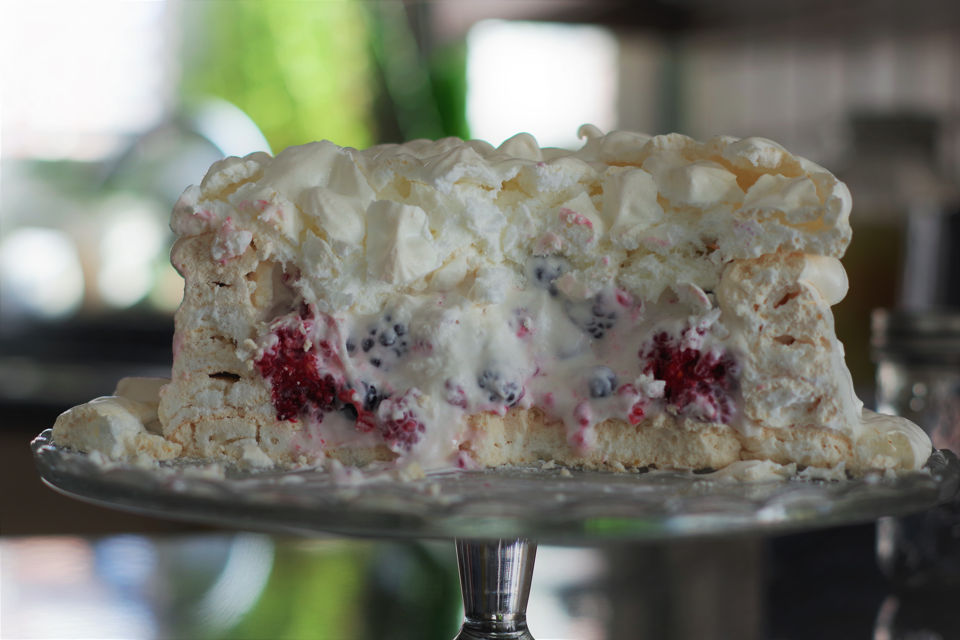
The preparation is not complicated (whipped egg whites with sugar, how difficult is that?), but it is time consuming and a bit tedious. The whole process of shell making is divided into two parts. In the first part you have to pipe egg whites shapes (rings and base) directly onto the parchment paper lined baking pan, and slow bake it over the course of several hours. After being taken from the oven everything has to be completely cooled off before proceeding with the second part of the process. The second part involves: assembly of the previously baked rings and the base, which are together assembled into a cylinder with one side closed, piping of torte lid piece and rosette decorations. This all is followed with another several hours of slow baking.
I made the cake over the course of 3 days, I found this to be the easiest way to go. This way I don’t have to wait for the cooling times in between the steps, instead I simply let it cool off overnight. First two days are used to bake the shell and the third day to make the fruit filling. The torte is served immediately, after the shell has been filled with the fruit filling.
In conclusion: this is a torte with quite unique and appealing taste, but I think it can be made much simpler. Pavlova torte comes to mind, it has a very similar taste but is much easier and faster to make. With Spanische Windtorte much effort is dedicated to baking of decorative shell, torte base and the lid. No doubt, they look esthetically pleasing and interesting. However, all of that is quickly cracked and crumbled on a first cut you make with the knife. Depends what you want: If you like the look and its esthetic appeal than it is definitively worth baking it, if you are more interested in the taste alone, I suggest you go for Pavlova. Having said that I should be making Pavlova very soon.
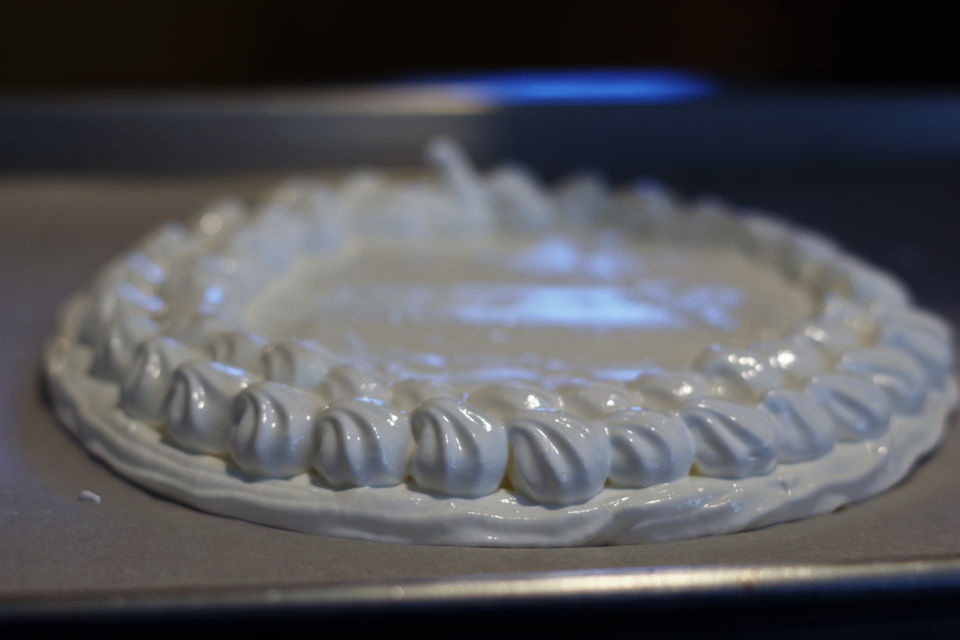
The recipe has been adapted from my favorite: “Kaffeehaus – Exquisite Desserts from the Classic Cafés of Vienna, Budapest and Prague”.
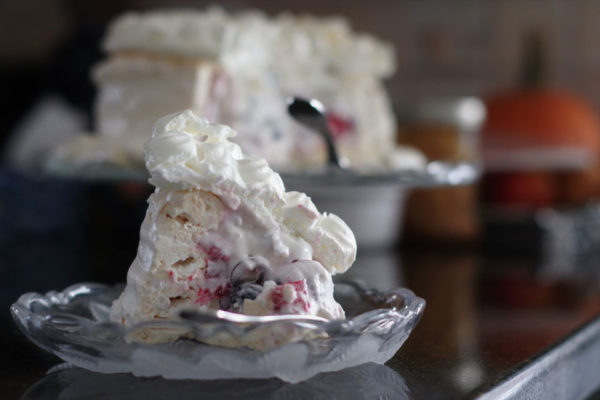
| Prep Time | 30 minutes |
| Cook Time | 6 hours |
| Servings |
servings
|
- 6 large egg whites at room temperature
- 1/4 tsp cream of tartar
- 1 1/2 cups superfine sugar
- 8 large egg whites at room temperature
- 1/2 tsp cream of tartar
- 2 cups superfine sugar
- 1 cup heavy cream 35% MF chilled
- 3 tbsp confectioner's sugar
- 2 tbsp kirschwasser or maraschino
- 4 cups mixed fresh fruits strawberries, blueberries, raspberries, blackberries
Ingredients
First Meringue
Second Meringue
Fruit Filling
|

|
- Position two racks in the middle and lower third of the oven, pre-heat the oven to 93ºC (200ºF).
- Line two 42cm x 27cm (17" x 11") baking pans with parchment paper. Use 8"- 8 1/2" round springform pan bottom or cake pan as a template and draw 2 circles on each paper. Turn the peppers over and fit them into the baking pans. The circles should be visible from the other side of the paper.
- In a large bowl, using a mixer at low speed, beat the egg whites until foamy. Add cream of tartar and continue beating until soft peaks form. Gradually add the sugar 1 tbsp at the time, and beat until stiff peaks form. Transfer meringue to a large pastry bag fitted with 7/16" wide plain pastry tip.
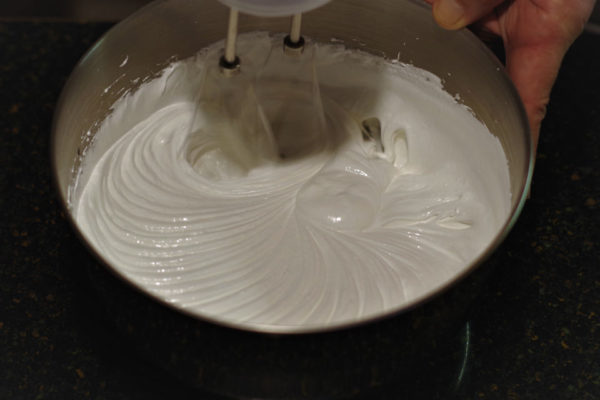
- Pipe 1/2" to 3/4" wide ring just inside one of the circles, continue spiraling in until it covers the whole surface and finishes in the center of the ring. Smoothen the surface with an offset metal spatula. This disc will be the bottom of the torte.
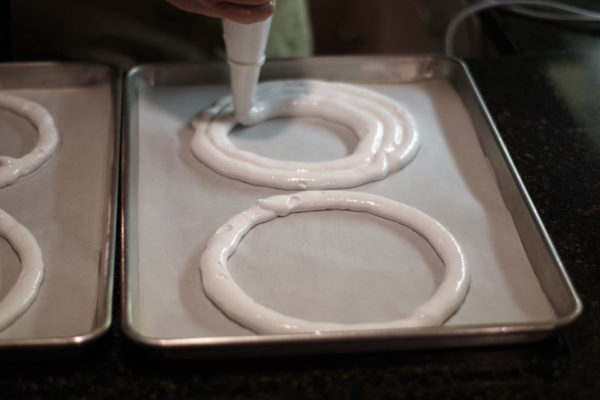
- Pipe plain ring just inside of each of three remaining circles. After being baked these rings will be stacked up and will make the wall of the torte.
- Bake both pans on separate racks until the meringues are pale beige and firm. That is about 1.5 hours for the rings and 2-2.5 hours for the disk. Occasionally open the oven door and ventilate for 30 seconds to maintain low oven temperature. After 45 minutes of baking, switch the position of the baking pans from top to the bottom.
- Let cool meringue on the baking pans for about 1 hour and then carefully remove from the paper and cool completely on a cooling rack.
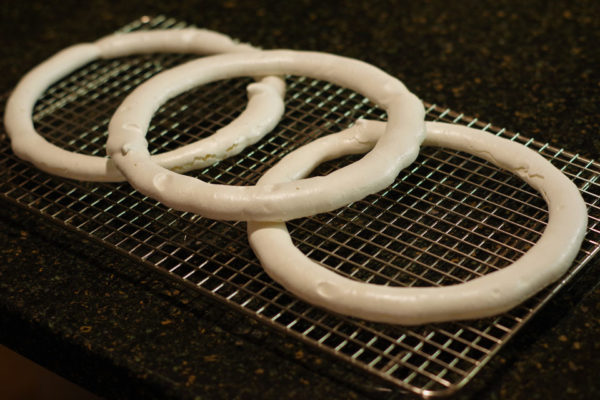
- Cut two parchment papers to the same size as for the first meringue. Use 8"- 8 1/2" round springform pan bottom or cake pan as a template and draw a circle on one parchment paper. The second paper should be without marks. Line two 42cm x 27cm (17" x 11") baking pans with these papers.
- Make the second batch of meringue in the same way as described in step 3 of instructions for the first meringue.
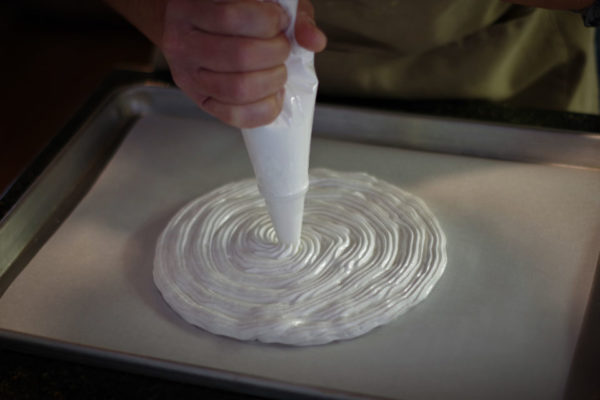
- Transfer half of meringue to a large pastry bag fitted with 9/16" wide open star pastry tip. On a marked parchment paper, pipe a spiral just inside of the circle and continue to the center to cover the whole area. Smooth the top surface with an offset metal spatula. Pipe rosettes tightly on top until completely covering the disc. This will be the top of the torte.
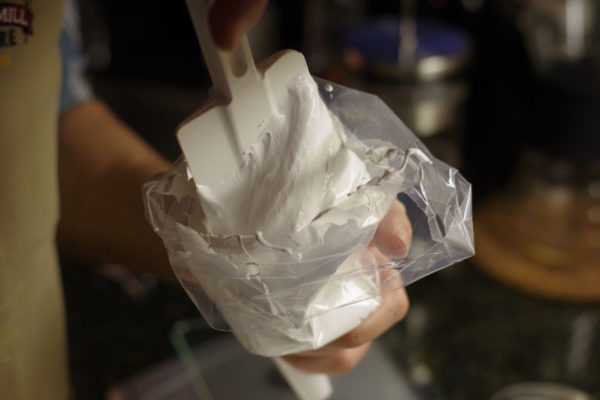
- Transfer about 2/3 of the remaining meringue to the pastry bag.
- Place the baked meringue disc on a lined baking pan (second or unmarked paper). Pipe some of the meringue around the top perimeter of the disc and use it as a cement to attach the first of the 3 baked rings. Stack up the other two rings in the same manner.
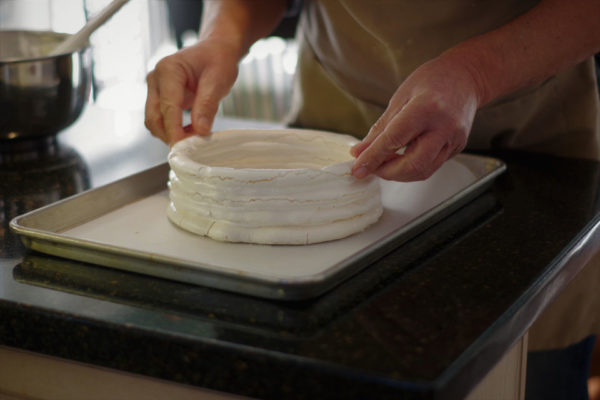
- Using an offset metal spatula and remaining meringue in the bowl, spread a smooth layer of meringue over the sides of the stacked rings, inside and outside. Pipe decorative rosettes around the top and the bottom of the meringue cylinder.
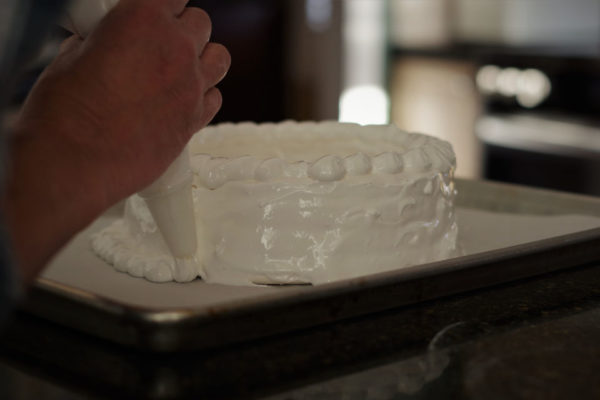
- Bake the cylinder and the top disc on two separate racks, until pale beige and firm, about 2.5 hours. After 1 hour of baking, switch the positions of the baking pans top to bottom.
- Turn off the oven and just slightly crack the oven door open. Let the meringue cool off in the oven for about 3 hours. Take out of the oven, remove parchment paper and let dry overnight on a cooling rack.
- In a large cold metal bowl beat the cream and confectioners sugar until stiff peaks form. Fold in maraschino first and then fold in the fruits.
- Transfer the meringue shell to the serving dish or a cake stand. Spoon the filling into the meringue shell and top with the lid. Use serrated knife to cut into wedges and serve immediately.
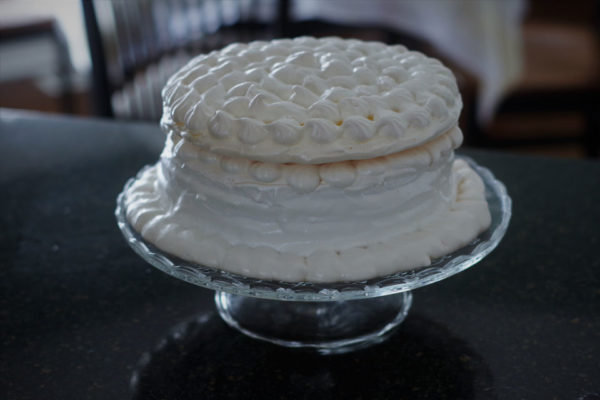


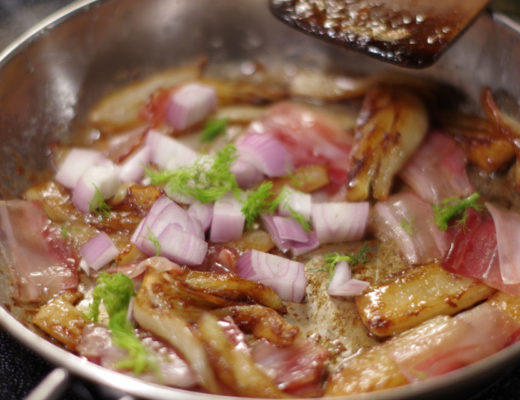

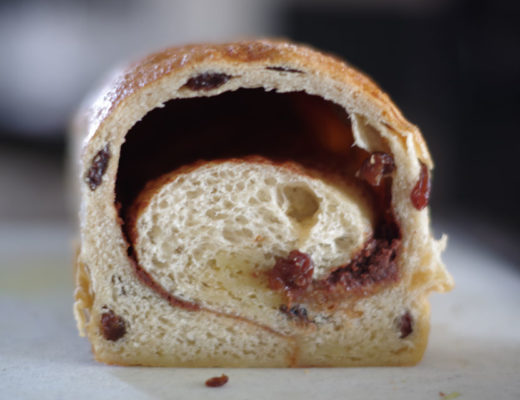
No Comments